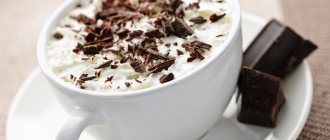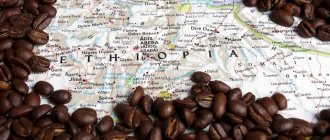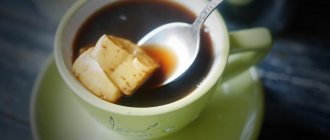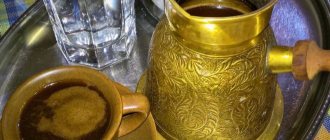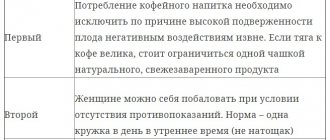The popularity of coffee in Europe began relatively recently, but the tradition of consuming this wonderful drink has ancient roots. Coffee traditions have been formed over centuries, acquiring new, sometimes very bizarre forms along with the spread of coffee around the world, reflecting the characteristics of the cultures of those peoples who discovered coffee beans. In some countries, the culture of drinking the drink is so firmly woven into everyday life that it is simply impossible to imagine them without it - these countries may well lay claim to the title of “coffee countries”. How exactly do coffee drinkers support the greatest coffee lovers in Italy, Turkey and Ethiopia?
Brazil
If you are a true coffee connoisseur, then you know for sure: Brazil is a coffee country. Almost a third of all grain grown in the world belongs to this state. But not only in terms of yield and volumes of coffee exports, Brazilians are ahead of other countries. Temperamental South Americans also occupy a leading position in the consumption of this wonderful drink. They drink it for breakfast, after lunch and dinner, as well as instead of and in between. Tea is chosen only on special occasions. The most popular coffee drink in Brazil is called cafezinho, which translates to “little coffee.” It’s not enough because they only pour half a glass of it, although you can add a little more water or milk if you wish. But it will be a different drink. Sometimes “cafezinho” is served in small cups. Brazil's national coffee is filtered using a cloth or paper strainer and served hot and very sweet.
Amazing Facts About Coffee
Coffee is one of the most popular drinks in many countries. Grains are used in various fields. There are many amazing stories associated with coffee. Some of the data is simply amazing.
Interesting facts about coffee:
- — the height of the coffee tree is about 9 m, but only three-meter ones are found on plantations, to make it easier to collect the fruits;
- — grains are picked by hand, one person collects about 7 baskets (100 kg each) per day;
- — workers’ payment for one basket ranges from $2 to $10, and after drying and frying, the cost of the basket increases to $110;
- — the life of one coffee tree can reach 70 years;
- — coffee grows in a narrow geographical zone, between the tropics of Capricorn and Cancer;
- - instant drink was invented in 1906 by the Belgian George Washington;
- — there are 300 different devices for brewing, and 1,200 devices for grinding, roasting and other manipulations with coffee beans;
- - in Las Vegas in 2010, the largest cup of coffee was prepared, which consisted of 35,000 servings;
- — from 4000 pieces of beans, the output is 1 kg of finished coffee beans;
- — in Brazil, in Sao Paulo, a monument was erected to the coffee tree;
- — Finns are record holders for drinking the drink, accounting for 12 kg per person per year;
- — in 2011, coffee-scented stamps were released in Brazil;
- — in England, in the city of Banbury, there is an unusual power plant, its uniqueness is that it runs on coffee grounds.
Türkiye
In this eastern country, residents value coffee not only for its unique taste, but also for the opportunity to discover the future with its help. Any tourist can also take advantage of this national tradition. Everything is very simple. At any local establishment or coffee shop, you order freshly brewed Türk Kahvesi coffee, which is prepared in a Turk placed in hot sand, enjoy it while eating sweet Turkish delight and go with the remaining coffee grounds to the fortune teller. Based on the contours of the remains of the invigorating drink, she will tell you what she sees. What exactly the fortune teller will discern and from which hidden chest of fantasies he will voice the local version of the “Rorschach test” is not so important. This is part of a long-standing and colorful ritual. And if you don’t like the prediction, don’t worry. There is a saying in Turkey: Fala inanma falsız kalma (“Don’t believe in fortune telling, but guess”). Yes, and to find a fortune teller, you don’t have to dig through local newspapers with advertisements; many cafes provide this service completely free of charge.
There is another local coffee drink that is definitely worth trying. It's called "The Secret of the Old Moor." You could say this is coffee with a twist, the role of which is played by ordinary garlic in the literal sense of the word. But it is very difficult to guess that this ingredient is there. Garlic mixed with grains, and even seasoned with honey, simply enhances the taste of coffee and makes it unforgettable.
Facts from coffee history
- Humanity did not immediately figure out how to brew a coffee drink - first they chewed the beans, then prepared them in the manner of tea. It was customary for ancient travelers to mix crushed grains with fat and prepare something like flat cakes, which provided good energy during long hikes.
- In the Arab world, the drink was traditionally prepared in long jugs called “dalla”. This tradition has been preserved - even in the 21st century, in some Arab establishments coffee is served in exactly this type of container.
- It is interesting to learn about how the cezve (aka “Turk”) appeared. One of the sultans was very fond of coffee, but an ordinary dalla was not suitable for the royal court, and the drink regularly “ran away” from golden dishes. One of the viziers undertook to solve this problem. Through trial and error, he managed to find the ideal shape of the cezve and learned that copper or silver should be used as the material for production.
- Coffee first appeared among the Arabs, but attitudes towards it changed over the centuries - it was either completely prohibited or forcibly imposed. Eventually it became a popular drink, consumed by both sultans and peasants. At one time, to popularize coffee, merchants promised heaven to everyone who drank it. Alcohol is prohibited by the Koran, and coffee invigorates quite well, without falling under religious sanctions.
- Coffee has become so firmly established in the lives of Arab peoples that it has become an official reason for divorce. In Turkey, a wife could legally divorce her husband if he was unable to provide her with enough drink.
- Coffee gained a foothold in European territory in the second half of the 16th century thanks to Pope Clement VIII. He liked the taste and aroma of the drink so much that he allowed its widespread consumption. Previously, coffee was considered sinful because it was drunk by Muslims.
- The first public establishment in Europe where coffee was brewed opened in Oxford (England) in 1637, and on the mainland - in Venice in 1654.
- European coffee houses quickly became meeting places for students, teachers, philosophers, writers and poets.
- Many monarchs banned such establishments as breeding grounds for freethinking. For example, Charles XII in 1675 issued a decree to close all coffee shops in the country, and Frederick the Great in 1777 banned not only the establishments, but also the drink itself, organizing a special supervisory body or “coffee investigation.”
- Americans became massively addicted to coffee in 1670. Previously, they preferred to drink beer at breakfast.
Finland
If you like to add dairy products such as milk or cream to your coffee, you will most likely enjoy Kaffeost Finnish coffee. For an unusual taste, “milk” is also added to this strong, aromatic drink, only in the form of Lapland cheese Leipäjuusto (“Bread Cheese”). This cheese is made from cow's milk, sometimes with the addition of goat and deer milk, then baked in the oven until golden brown, cut and placed in a coffee cup. They say that local residents are absolutely delighted with it. By the way, this drink is also popular in neighboring Sweden.
Malaysia
Malaysia is famous for its “white coffee” (Ipoh coffee). This amazingly tasty and invigorating coffee drink is not made from white beans, as many people think. This type of coffee simply does not exist in nature, do not believe the legends and (especially) advertising. To get “white coffee”, Arabica, Robusta and Liberica are mixed, then roasted together with palm margarine (lightly roasted), hence the light color of the beans. Well, on top of everything else, condensed milk or cream is added to coffee.
Dishes for drinking natural coffee
In order to preserve the inimitable taste qualities that bean coffee has, you should carefully select the appropriate utensils. Coffee is a product with high absorption qualities, which means that the composition of the raw material, and only then its shape and design level, should be the key factor when selecting tableware.
Cups made of high quality natural clay and porcelain most emphasize the flavor tones of natural coffee. Earthenware sets, the most represented in the coffee set segment, do not create the necessary unique taste, but it is very rare now to find orthodox metal sets made of copper-containing alloys, and copper molecules are known to intensively enhance the flavor fluids of coffee.
The volume of a cup for natural coffee should be a maximum of 60 ml. The shape of a coffee cup in European traditions is cylindrical with a small diameter, and among southern peoples it is customary to drink coffee in a miniature bowl-shaped container.
Hong Kong
"Coffee or tea?". Quite often we ask ourselves this question (or we are asked). But in Hong Kong this is never a problem. Those undecided are offered the Yuenyeung coffee drink, which is a combination of black coffee (30%) and Hong Kong “silk stocking milk tea” - a mixture of several black teas (70%), flavored with thick fat milk (you can use condensed milk if you like sweet tea). The resulting unusual caffeine cocktail can be consumed both hot and cold.
Vietnam
But coffee with cheese, dear reader, is nothing. In Vietnam, gourmets went further and added eggs to the strong drink. “How can you drink this?” - you might think. Very simple, and with great pleasure. After all, in appearance and taste, Vietnamese coffee Cà Phê Trứng (coffee with egg) resembles a dessert. To prepare it, robusta beans are used, which are dark roasted and coarsely ground, and then passed through a special Vietnamese coffee filter. Beat egg yolks with condensed milk and sugar until foam forms, add all this beauty to coffee and cook the drink over low heat. This is a kind of eggnog from Vietnamese connoisseurs. Cà Phê Trứng can also be drunk hot or cold.
Portugal
The Portuguese can perhaps compete with the Brazilians in the amount of coffee consumed per day. In this country, they also love coffee and drink it in abundance - in liters, at any time and in any place. 5-6 cups a day, or even more. Espresso is especially held in high esteem by locals. To brighten up the drink, many Portuguese prefer to add lemon juice or lemon-flavored soda. Even if you just imagine it, it’s quite an “explosive” elixir. By the way, in Italy the classic coffee drink is espresso with a slice of lemon. There is something in this, you need to try it.
Coffee traditions in Italy.
Italians are the people who created the classic espresso recipe and elevated its consumption to a whole cult. Firstly, coffee is only drunk until eleven in the morning. Italians are restless and hasty people, and therefore they drink their espresso very quickly - everything takes a few minutes.
Secondly, there are certain coffee traditions for drinking this drink, otherwise you will insult the drink with your disrespect for its taste. Real espresso is served at 60-75 degrees and drunk in two or three sips. In an Italian coffee shop, in addition to coffee, you will receive a glass of clean water, but it is not intended to cool the drink.
The way to drink Italian coffee is to first take a sip of water to clear your taste buds of everything you've eaten or drunk before. Next, drink coffee, enjoying the richness and depth of taste. And at the end, you finish the water: drinking strong coffee causes an imbalance of fluid in the body, and it needs to be restored. Thank the barista and go on about your business - Italy is a vibrant and bustling country, there is always something to do, even if you have lived there for many years.
Mexico
For lovers of spices (and there are many of them), Mexican coffee is a must - Cafe de Olla (coffee in a pot). This is a drink with its own history. During the Mexican Revolution, it was used by soldiers and their leader Emiliano Zapata as a natural energy drink. Today, they drink it not only for good spirits, but also just for pleasure, sipping from special clay cups. To prepare it, the most popular spices are used - cloves, cinnamon sticks, anise, mixed with ground coffee beans, water and cane sugar (piloncillo). Coffee is brewed over low heat in special clay pots, then filtered through a sieve. Mexicans, not without reason, believe that earthenware helps the taste of coffee beans to develop better.
Select and roast your beans with a master roaster in Hawaii
When we mention the Hawaiian Islands, the imagination draws pictures of excellent beaches, however, if we are talking about Hawaiian coffee, then we should mentally transport ourselves to the mountains.
Mountain Thunder Coffee Plantation is located in the Kona area of the Big Island, which is the most famous coffee producing area on the islands. The highest point of the plantation is located at an altitude of about 1 thousand meters, which is 60 meters higher than the point that was previously considered the highest place for food preparation. However, this height is ideal for growing amazing coffee.
Mountain Thunder offers tours that teach how Kona coffee is grown, harvested, ground and sorted. You can also try your hand at being a coffee roaster.
This profession is in the top 10 among all food production jobs. Under the supervision of an experienced professional, you can roast your coffee cherries until they are perfect beans ready for coffee.
Arab countries
Saudi Arabia also loves spices. Why, in all Arab countries coffee is brewed with the addition of a whole kaleidoscope of spices. In addition to those added by Mexicans, Arabs also experiment with cardamom, cloves, saffron and ginger. And in Morocco, when preparing coffee, they also use black pepper and nutmeg. But according to local traditions, you need to choose spices for a drink based on a specific case. So, if a happy event happened in the house, Moroccans add sweet notes to the drink, but if it’s the other way around, they brew bitter coffee.
Ireland
Perhaps, coffee in this country is most often drunk in the evenings, after a hard day at work, or to warm up. The islanders can be understood; they can enjoy the taste and aroma in the morning or in the middle of a working day, but with unpredictable consequences: one of the ingredients in the coffee here is alcohol. As an additive to coffee, the Irish use whiskey with added sugar and whipped cream, mainly for decoration. Irish Coffee should be drunk without stirring so that you can gradually feel the combination of flavors and enjoy it.
Watch death over a cup of coffee in Thailand
In the Thai capital Bangkok, there is a cafe that invites visitors to “die” before drinking a life-giving caffeine-filled drink. At Kid Mai Death Awareness, the area is divided into zones, one where you can plan your funeral, another where there's a real coffin where you can climb in to savor your discounted drink. But keep in mind that the coffin lid will be closed! This place is specially created for those who say they will die without a morning cup of coffee.
By all accounts, Kid Mai Death Awareness is more art than classic cafe. It represents Buddhist teachings and philosophy. It was founded by Veranut Rojanaprapa, an assistant professor at St. John's University in Bangkok. According to the owner, it reduces greed and anger by making people realize that one day they will disappear.
Fortunately, a fake death awaits you in the cafe, because the coffin lid opens after 3 minutes, which is enough for you to enjoy your drink. At Death Awareness you'll find a "Last Day" espresso or "Another Year Has Gone" latte, as well as other themed coffees.
4
France
Well, what Frenchman doesn’t like to start his morning with a cup of freshly brewed black coffee and a crispy croissant! The smell of an aromatic drink and baked goods simply knocks you off your feet. And if suddenly the ritual is broken, the day may not work out. This is why locals prefer to wake up a few minutes earlier, so that they can spend this time with a cup of coffee in hand, without rushing anywhere. In France, they drink coffee with the addition of fresh milk and always from a large cup - this makes it easier to dip baked goods into it.
Coffee culture in Ukraine: where and in which cities are the best coffee shops
That is why, in order to get acquainted with classic and alternative coffee tastes and enjoy this drink, you do not need to go far abroad. In Ukraine, the culture of its consumption is already so developed that when you arrive—it doesn’t matter whether you’re in a big or small city—you’ll find an excellent coffee shop.
Going to Lviv on the weekend is already a tradition. It is impossible to imagine the streets of the Old Town without the tart aroma of freshly brewed coffee. There are so many coffee shops that it’s dizzying, and in October a Coffee Festival is held in Lviv. There is even a coffee mine here - the famous coffee shop “Digging Kavi” lures tourists into its dungeons, where ordinary gatherings in a cafe turn into an exciting free excursion that ends with a cup of tart aromatic drink.
But not just Lviv: there are many coffee shops in other cities. To know exactly where to go for coffee, you can use the City Coffee Guide application, where you can find the best coffee shops in Ukraine. Including third wave coffee shops.


